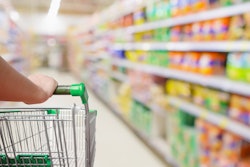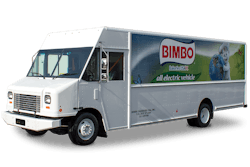
Multipacks have become ever popular, responding to consumer demand for more choices in product SKUs and packaging options. Buyers love the wholesale prices, variety of products in one package and the grab-and-carry convenience of multipacks. For manufacturers, bottlers and distributors of spirits and other beverages, multipacks open up new options to incentivize buyers, while promoting a larger quantity of products sold. Bottles arrive clean and organized. Theft and tampering are reduced and less plastic and cardboard go to waste, as multipacks require less secondary packaging material than with individual containers. This helps manufacturers achieve sustainability initiatives.
Many multipacks rely on shrink wrapping to achieve these objectives, but wrapping vertically-oriented containers, such as bottles for spirits, wine and tea has proven challenging.
Inefficiencies in shrink wrapping vertically-oriented bottles for multipacks
In a conventional multipack shrink wrap setup for wrapping vertically-oriented bottles, once the containers are filled, they must then be laid down on their sides on a conveyor and manually turned so that their logos are facing in the same direction and/or their barcodes are hidden. The only practical way to hold the items together to keep them from rolling while being wrapped is to use a chipboard carrier tray or boot. They are then fed through a horizontal shrink wrapper which applies a polymer plastic film, and when heat is applied it shrinks tightly over whatever it is covering.
Because the manual manipulation of the bottles is done off-line, many manufacturers prefer to send out the individual containers after filling to contract packagers and have them orient the bottles and shrink wrap them into multipacks. In essence, the manufacturer fills the bottles, sometimes wraps them, boxes them, palletizes them, ships them to a contract packager who takes the individual bottles out of the boxes and puts them on a conveyor along with a carrier tray, orients the positioning of the containers so the logos and barcodes are in the proper position, then shrink wraps them in multipacks, boxes, palletizes and sends them back to the manufacturer for distribution or to an external distribution center.
This method not only adds additional costs, labor and time to the packaging process, but also necessitates the use of added packaging materials from the carrier trays and film for double wrapping. Add to this the increased consumption of energy for additional transportation and the double wrapping and cartoning, making for a very inefficient system.
Manufacturers and bottlers have been in need of a way to shrink wrap these vertical-bottle multipacks without the added labor and expense from conventional horizontal shrink wrapping systems.
New technology enables upright product positioning
The latest technology in vertical shrink wrapping eliminates these problems. Most critically, they can automatically wrap multipacks of bottles directly from the fillers with the product standing upright. With no need for manual re-orienting of the products prior to wrapping, containers can now go directly from filling to wrapping, and to palletizing and distribution in-line, without interruption. Additionally, carrier trays are no longer required to position the individual containers for shrink wrapping with this latest technology.
Automated container orientation
To make this vertical shrink wrapping technology even more effective, a multipack of vertically-oriented bottles can be automatically arranged with the labels facing precisely in the same direction while standing upright, before shrink wrapping.
These shrink wrappers use high-speed camera technology to scan each item as it enters the system. Camera data is transferred to the controller, resulting in exact movement information to obtain the desired final product orientation. Servo-driven gripper wheels spin each bottle to this position resulting in precisely aligned labels for a strong point-of-sale visual presence. This makes a very attractive and functional multipack.
The wrappers are also flexible enough to orient different labels in a variety multipack.
Hiding barcodes
An important function in packaging of multipacks is to cover the barcodes of the individual bottles, so that the package can be identified as a multipack and not as individual units.
The servo-precision of this new vertical wrapping technology ensures that the individual bottle barcodes can be covered by printed film.
Because this wrapping technology does not require a carrier tray to hold bottles in place while wrapping, in applications where the carrier tray was also used to hide barcodes from individual containers, the packager can now use printed film to correctly identify the unit as a multipack.
Improved multipacks for spirits, wine, tea and other beverages
Whether producing 4-packs, 10-packs or multipacks of 50-ml bottles, these new vertical wrapping technologies not only allow spirits, wine, tea and other beverage manufacturers and bottlers to eliminate costly, time-consuming and resource-intensive processes from their end-of-line production chains, but they open up more opportunities for packaging designers and improve product presentation on store shelves.




















